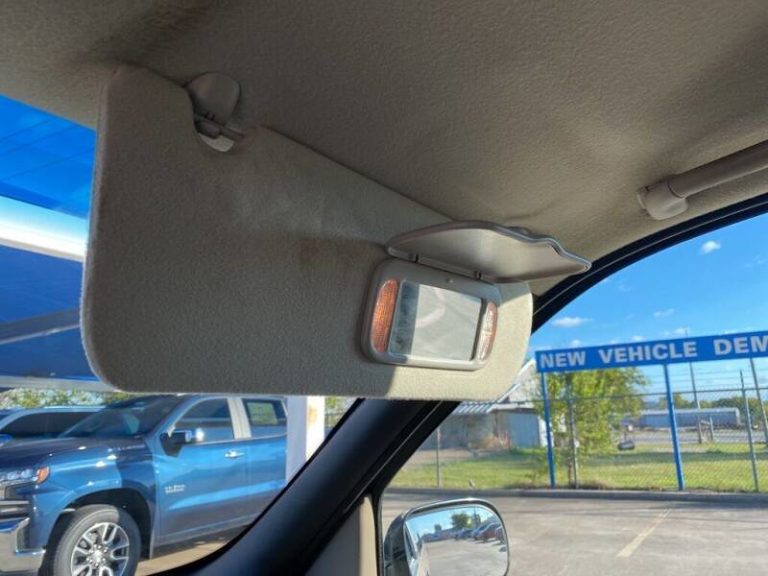The Significance Of Buffing Pad Color
Have you ever stood in a detailing supply store, overwhelmed by the sheer variety of buffing pads? Their colors seem almost arbitrary, but the shades actually indicate the pad’s abrasiveness and intended use. This post will unravel the mystery of color of buffing pads, helping you choose the right one for your project and achieve professional-level results. You’ll learn how to match the pad’s color to your specific needs, ultimately saving you time, money, and frustration.
Choosing the Right Buffing Pad Color
The color of a buffing pad is directly correlated to its cutting and polishing power. Understanding this relationship is crucial for successful car detailing, furniture restoration, or any project involving buffing. This section outlines the different color categories and their applications.
Cutting Pads
- Black: Typically the most aggressive, black pads are ideal for removing heavy scratches, swirl marks, or old paint layers. They are designed for heavy cutting and should be used with caution to avoid removing too much material. Always start with the least aggressive pad possible.
- Dark Gray/Blue: These offer a medium-aggressive cut, suitable for removing moderate imperfections while being less harsh than black pads. They represent a good compromise between aggressive cutting and surface preservation.
Example: A severely scratched car hood would benefit from a black cutting pad initially, followed by a less aggressive pad to refine the finish. Always test on an inconspicuous area first.
Polishing Pads
- Orange/Red: These medium polishing pads are a step down from cutting pads. They help refine the surface after cutting, removing finer scratches and improving clarity. They are versatile and work well with a variety of polishing compounds.
- White: White pads are the least aggressive, ideal for final polishing and enhancing the gloss. They are primarily used to remove very fine imperfections and leave a high-gloss finish.
Example: After using an orange pad to remove most of the imperfections, a white pad can be used to create a perfect, mirror-like shine. The order of operations is crucial to achieve the best finish.
Different Materials and Their Color Implications
The color of a buffing pad isn’t solely determined by its abrasiveness. The underlying material also plays a significant role, influencing both color and performance. This section explores various materials and how color relates to their properties.
Foam Pads
Foam pads are the most common type, available in various densities and colors. Denser foam pads tend to offer more cut and often appear darker in color, whereas less dense foam pads are lighter and better for polishing.
- Density and Color Correlation: A denser, darker foam pad will generally offer a more aggressive cut. Conversely, a lighter, less dense pad is better suited for polishing and finishing.
- Foam Pad Durability: The lifespan of a foam pad depends on several factors, including the material’s density, the type of compound used, and the amount of pressure applied during buffing. Regular inspection and replacement are necessary.
Wool Pads
Wool pads, usually darker in color, offer aggressive cutting action. They are typically used for heavy-duty tasks like removing paint, but require more skill and care to avoid damage.
- Wool Pad Aggressiveness: The natural fibers in wool pads make them highly effective at removing significant amounts of material. However, this aggressiveness requires experience and precision.
- Wool Pad Maintenance: Wool pads need more care than foam pads; cleaning and maintaining them properly extends their longevity. A good cleaning after each use is essential to prevent the build-up of abrasive compounds.
Understanding Buffing Pad Abrasiveness
The abrasiveness of a buffing pad is the key factor to consider when choosing a color. This section explains how different levels of abrasiveness affect the outcome of the buffing process. It is vital to choose the right level to avoid damaging the surface being worked on.
Abrasive Level and Surface Damage
Using too aggressive a pad can lead to significant surface damage such as deep scratches and holograms. Using too light a pad may fail to remove imperfections completely.
- Matching Pad to Imperfection: The choice of buffing pad should be carefully matched to the severity of imperfections. For minor scratches, a light polishing pad might suffice; for major defects, a cutting pad is necessary.
- The Importance of Proper Technique: Even the correct buffing pad choice won’t guarantee a good result if the technique is incorrect. Consistent pressure, overlapping passes, and correct speed are all critical for success. Many online videos show the proper techniques.
Common Myths About Buffing Pad Colors
Myth 1: Darker Always Means Better.
While darker colors often indicate a more aggressive cut, this isn’t always the case. The material, density, and construction of the pad are more important factors than the color alone.
Myth 2: All White Pads Are the Same.
White pads can range in abrasiveness. Some are designed for final polishing, while others are meant for lighter cutting. Always check the manufacturer’s specifications.
Myth 3: One Pad Does It All.
Using a single buffing pad for all stages of the process is rarely efficient or effective. Using multiple pads tailored to each stage (cutting, polishing, finishing) is usually necessary for optimal results. A cutting pad should be followed by one or more polishing and finishing pads.
Advanced Buffing Techniques and Pad Combinations
Mastering buffing involves more than just choosing the right pad color. This section explores advanced techniques and combinations to achieve superior results. Experimentation and practice are key to mastering these techniques.
Combining Pads for Optimal Results
- Start with the most aggressive pad (e.g., a black cutting pad) to remove heavy scratches and imperfections.
- Follow with a medium-aggressive pad (e.g., an orange polishing pad) to refine the surface and remove finer scratches.
- Finish with a less aggressive pad (e.g., a white finishing pad) for a high-gloss, swirl-free finish.
Insert a comparison chart here showing various pad combinations and their effects on different paint types.
FAQ
What is the difference between a cutting and polishing pad?
Cutting pads are more aggressive and remove heavier imperfections, while polishing pads are less aggressive and refine the surface for a higher gloss.
Can I use a cutting pad for polishing?
While possible, it’s generally not recommended. Using a cutting pad for polishing can lead to excessive material removal or holograms. It’s better to use the appropriate pad for the job.
What happens if I use the wrong color buffing pad?
Using the wrong pad can lead to several issues, from leaving swirl marks and holograms, to removing too much material, damaging the surface, or failing to remove imperfections altogether.
How often should I replace my buffing pads?
The lifespan of a buffing pad varies depending on use, but signs of wear like tearing, significant flattening, or noticeable debris buildup indicate it’s time for a replacement.
What type of compound should I use with each pad color?
The choice of compound depends on the pad and the level of correction needed. Generally, more aggressive pads are used with heavier cutting compounds, while less aggressive pads use lighter polishing compounds.
Final Thoughts
Understanding the significance of color of buffing pads is vital for achieving professional-level results in any buffing project. By carefully selecting the appropriate pad based on its color and abrasiveness, you can ensure efficient removal of imperfections, leaving behind a beautiful, high-gloss finish. Remember to always start with the least aggressive pad possible and work your way up, as necessary. With practice and the right knowledge, you’ll become a buffing pro in no time!
- Protecting Your Truck Bed: A Guide To Truck Bed Covers - July 14, 2025
- Finding The Right 88-98 Chevy Truck Bed Cover - July 14, 2025
- Finding The Right 88-98 Chevy Truck Bed Cover - July 14, 2025

